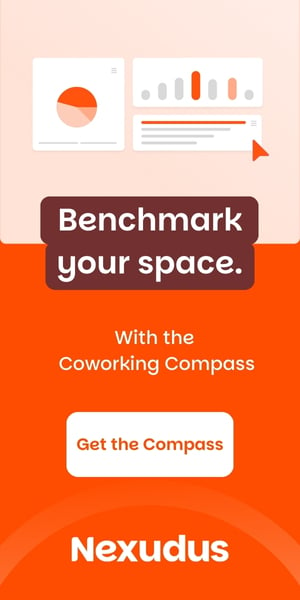- Highlights from an Instagram training session hosted by content marketing expert Cat Johnson, and Karina Patel, Director of Marketing at Pacific Workplaces.
- The session was tailored for coworking and flexible workspace operators, and explained in-depth how to start and run a successful Instagram marketing strategy.
- Tips included understanding Instagram terminology, setting up a business profile, using hashtags, and measuring campaign performance.
Instagram has become one of the most popular social media platforms, especially among women and those aged 30 years or younger according to recent data given by Facebook.
During a recent training session hosted by content marketing expert, Cat Johnson — “Instagram Marketing: an Introduction for Coworking Spaces” — Karina Patel, Director of Marketing at CloudVO and Pacific Workplaces, made a strong case as to why coworking businesses need to leverage Instagram and how to do it.
Instagram Quick Facts:
- It has over 1 billion active users
- Users like over 4.2 billion posts per day
- 80% of users follow a business on Instagram
- Users share over 95 million posts per day
- Users post 200 million Instagram stories a day
- 33% of the most viewed stories are created by businesses
5 Key Elements to a Successful Instagram Marketing Strategy
Know the Basics
The first thing you need to know about Instagram is that it’s a visual platform, which means you need to strike a balance between art and strategy.
“Instagram is a curated visual experience of your brand that is creatively presented and strategically planned in order to build a relationship with your audience.”
This resonates with coworking space operators. They need to build relationships because relationships lead to trust, and people buy from, and engage with, companies that they like and trust. Content is a great way to build relationships with external communities and audiences.
Before you start planning your posts and arranging things so that they are visually appealing, you need to understand Instagram’s jargon.
- Gallery: a curated display of content telling a story about your brand. Your gallery is all the photos you have posted on your profile.
- Story: stories have a life-span of 24 hours and they are displayed at the top of a follower’s timeline. Stories are great for announcements, live events, or behind the scenes videos or photos.
- Highlights: highlights are stories that can live permanently on your profile. They are a curated collection of your instagram stories and can be watched anytime.
- Feed: a feed is a collection of the content posted by the people you follow; it’s what users see on their Instagram home screen.
Now that you know the basics about Instagram, here are 5 key elements to a successful Instagram strategy.
1. Switch to a business profile
Patel believes this is the first step coworking operators need to take in order to begin leveraging Instagram for their business. Instagram business accounts provide companies with access to valuable insights and allow companies to list their phone number and address.
When completing the business profile and when writing the business bio, coworking operators should focus on their most important selling points, events, product launches, or value propositions. However, once the profile is complete, it’s not a done deal.
“Since the only clickable link is in your bio section, make a habit of updating it frequently,” Patel said. One of the most common mistakes is that operators add a link to their homepage and leave it at that. If you’re having a special promotion, if you posted an interesting blog on your website, or if you just published a report or whitepaper, update your link. More importantly, make sure your posts and stories have a call to action for people to click on that link.
“The goal is to look for opportunities to move people off the platform and into your own channels.”
2. Type of content
Instagram supports video and photos. With video there is a 60 second limit for posts and a 10 second limit for stories. If you have longer content that you wish to share, you can use one of Instagram’s newest features, IGTV. However, Patel advises that businesses only use IGTV when they have professionally produced videos that they want to use or when they have consistent content planned out.
As to what type of content to post, Patel suggests that daily operations, community experiences, and reviews can all be turned into visual content. She also shared the following best practices to posting content on Instagram:
For your gallery
- Focus on your capabilities and not just your product or service
- Showcase your process (for coworking spaces, this means showcasing your team and your members)
- Your company culture (share tips, how-to ideas, photos of people working in your space, etc.)
- Remember that the posts that tend to perform best are the ones that have people in them
- Share user generated content
- Build hype and give your followers access to unique or exclusive information (these can be live tours of your space, access to discount rates, access to more meeting room hours, insider information, etc.)
- If you have an upcoming location, product, or service launch, create teaser posts that build anticipation
- Always include a call to action in your posts
- Make sure you add your location or city in every post
- Pick a theme and be consistent with it (themes can be filters, colors, types of photos, etc.)
- Be consistent on your post dates and make sure you are posting regularly
- Never delete posts as you could lose insights. Instead, archive them
For your stories
- Don’t post announcements and flyers in your gallery — save this type of content for your story
- Post one or two stories a day if you’re just starting out
- Tag other people in stories, when relevant
- Use the tools available for stories: superzoom, slow motion, the poll feature, the question feature
- Stories are great for photos, videos, live video, and boomerangs
- Post flashback photos, motivational quotes, announcements on national holidays, or announce an event with the countdown feature
If you’re just starting out with Instagram, try different post styles until you find the one that performs best and receives the most engagement.
3. Use hashtags
Hashtags are the key to making sure Instagram posts perform well. Using hashtags can help you expand your reach and get in front of new audiences.
Some things to keep in mind:
- Ideally, use 3 to 5 hashtags in each post
- Don’t mix your caption with your hashtags (unless it really makes sense .e.g “Check out our newest #coworking location in Texas”)
- Add space between your caption and the list of hashtags or alternatively post your hashtags as your first comment
- Use relevant hashtags. You can use websites like dailypurposes.com to find relevant hashtags for your business. You can also use Instagram’s discover feature.
4. Engage with your audience and collaborate
An important element of any social media strategy is to be social — this means engaging with your followers and collaborating with others.
To engage with others you should mention and tag people or companies when they are relevant to your posts. Make sure you are also liking and commenting on other users’ content and be sure to always respond to comments on your own posts.
There are two types of collaborations: unpaid and paid.
Unpaid collaborations are when you partner with another brand that has the same size of following as you do, and you give each other a shout out. These collaborations are great to do once a month or once a quarter.
Paid collaborations refer to influencer marketing. This is when you pay a brand or influencer with a much larger following to promote your services or products. In order for paid collaborations to be effective, the brand or influencer you choose has to have a genuine audience, otherwise people will not engage with the content.
As a rule of thumb, Patel doesn’t recommend influencer marketing for coworking spaces.
5. Measure your efforts
“You will only find out what works for your audience by testing and measuring results.” This is why having a business profile is important, as it provides you with access to valuable data about how your followers behave with your content.
Patel recommends that coworking brands regularly measure their follower count, their engagement, profile activity, profile visits, website clicks, post reach and impressions, audience location and demographics, and date and time of engagement.
It’s a lot, which is why Patel recommends operators create a tracking sheet.
Patel also recommends tracking your link sources through UTM Tagging. This is an advanced step and is useful for Instagram, as well as for other social media platforms and online marketing campaigns.
Below are the steps, as laid out by Patel:
- To get started, you’ll want to set up UTM tagging. UTM is short for “Urchin Tracking Module” and it’s a unique piece of code that you can add to the end of your URLs. UTM tagging ensures that Google Analytics is tracking the source of clicks with complete accuracy.
- Decide what website or specific webpage you want to send your followers to. It’s best to send your audience to a website so they can take a “next step” (e.g. signing up for a service, making a purchase, or to simply continue the conversation).
- Google Analytics lets you tag your URL with the following three campaign parameters and their values: utm_source, utm_medium, and utm_campaign.
- Google has created a Campaign URL Builder, which basically does all the work for you. Google’s Campaign URL Builder allows businesses to easily add campaign parameters to URLs so they can track custom campaigns on their Google Analytics Dashboard.
- Convert the URL to a ShortLink. Google allows you to do this automatically by redirecting you to Bitly.
- Copy and paste the shortened link to your Instagram bio (or any post on your social media profiles).
Cat Johnson’s next Coworking Content Training is ‘How to Create a Content Workflow for Your Coworking Space’ on June 26th, 2019. Find out more and register your interest here.


 Dr. Gleb Tsipursky – The Office Whisperer
Dr. Gleb Tsipursky – The Office Whisperer Nirit Cohen – WorkFutures
Nirit Cohen – WorkFutures Angela Howard – Culture Expert
Angela Howard – Culture Expert Drew Jones – Design & Innovation
Drew Jones – Design & Innovation Jonathan Price – CRE & Flex Expert
Jonathan Price – CRE & Flex Expert












